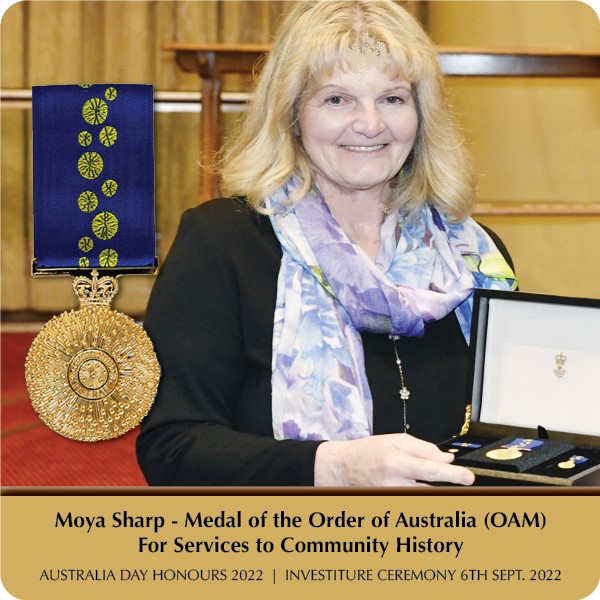- Aboriginal History
- Cemeteries
- Hospitals
- Hotels
- Maps of the Goldfields
- Military
- Miners
- Miscellaneous
- People
- Places on the Goldfields
- Place Index A-Z
This website is dedicated to the memory of my two dear friends Sandy Duncan and Shyama Peebles who both passed away in 2012.
Wilson Patch AKA Bundarra > About Wilson Patch
Wilson's Patch

Since construction of the new bitumen road from Leonora to Agnew/Leinster, the approach to Wilson's Patch has changed. 64km. along this new road from Leonora is the Teutonic Bore Mining turn-off 6km. further is a grave on the left-hand side between the road and fence. The grave is surrounded by a low wooden structure and is hard to miss. This site marks the centre of Wilson's Patch, with alluvial workings both sides of the road. To enter the western side, drive back towards Leonora about 1km. to a gate. Following the track inside the fence back to the grave, small dry blowing heaps are passed on the way. From this point for nearly 1km. west, nuggets have been picked up. The closer to the main creek you are (as shown on the map) the greater the rubbish. Over the years this has put many electronic prospectors off detecting the area, even those who first graded the spot, as much rubbish was pushed deeper. During late 1985, early 1986, we spent a few days cleaning the rubbish off a very small area and were rewarded with nearly two ounces in nuggets. Further clearing of the rubbish should yield more gold, with the chance of larger pieces closer to the creek. Further south along this creek and nearly parallel with the gate, a small gully and flat have been dry blown. The ground is littered with large hot rocks, some on the surface, some buried. Numerous nuggets have been detected here as late as March, 1986.
Approximately 250m. South-east from the small mine located on the edge of the creek and close to the main track are a group of dryblowings near a small granite outcrop. Several nice nuggets were picked up here, along with a very rough piece of gold of about 10 grams weight In the same hole as the rough nugget, the dirt produced very rich colours indicating the close proximity of a small leader that had yet to be unearthed. The finder of the gold did not spend much time looking for the leader and to the best of my knowledge it remains in place even today. Perhaps a few hours of sinking trenches about 0.5m. deep and about 3m long in this location may unearth it
Follow the main track west and over a distance of nearly 3km. small alluvial patches can be found. Of those already discovered, all have been graded and thoroughly detected, as little rubbish was in evidence. However, new patches on virgin ground are still a possibility. An interesting article appearing in The 'Dolly Pot' section of the *Western Mail,' 17 September, 1936, relates to Wilson's Patch and reads "Going along further we decided to give Wilson's Patch, then only just discovered, a try. I used to cart water from a place called Marshall's Pool about 15 miles distant. Having only a 56 gallon cask to cart the water with I had to make the trip once a week or more to keep the nine of us going.
One place between the Patch and the pool, a nice pebbly flat of ironstone had to be crossed and being smooth and hard I invariably jumped up on the dray and rode across it. Later when we started once more for Cue, a Spaniard, I think he was, asked me for a ride in as he was 'stony*. I told him to chuck his swag on the dray and off we started, all of us, of course, footing it, as the vehicle was well loaded. Now as we were crossing the aforementioned flat
over which I used to ride, the Spaniard picked up a 17 oz slag right on the side of the roadway and which I could not possibly have missed if I had been walking instead of riding over that particular place. We stopped an hour or two trying with our dishes, but were unsuccessful in locating any more, with the exception of a 4.5oz slug which my mate picked up about 30 yards away. However, we were unable to stop further, otherwise we might have done a day or two's work there.
The balance of this article deals with more happenings, but none relating to gold. To try and locate the exact spot of this find requires either incredible luck or a further amount of research. I spent several days looking for such a flat without success. The original Land and Surveys map ( located Battye Library, No.72, dated 20.8.1896) shows the track from Wilson's to the Pool. Latter day maps do not. It is almost certain that this gold-bearing patch exists and only requires someone to relocate it. Perhaps it may be you!
Back on the main bitumen road and directly opposite the grave site is a gate. Through this gate is another track heading east. From the gate for about 2.5km., almost until the old Melrose (Darlot) Road is reached, are numerous old dryblowings, grading’s and alluvial flats. All have produced nuggets, some being crystal gold and often worth twice the value of gold.
Along the main road and approximately 1km. north of the grave is a turn-off to the east which leads to the Weebo and Melrose Homesteads and others. 1km. along this road and to the north is a small quartz-strewn hill with a few small open cuts and grading’s. This is known locally as Pudley's Patch, named after Bill Pudley, who has spent much time prospecting and mining the lease. Gold from this area ranges from specks recovered in the dry blower, to 0.5 ounce nuggets located by metal detector operators. South of the grave site along the main road towards Teutonic Bore is the Rifle Range. Enter through the gate and turn south along the fence line; about 1km. along is a creek, from which gold has been detected in the last couple of years without producing a source. Careful prospecting of this region may yield a gold-bearing reef. As with other locations, the Wilson's Patch area is vast - far bigger than the prospectors who detected the area between 1978-85 ever realised. Numerous patches still come to light even today, most have not even been dryblown by the old timers, therefore giving no indication of their gold bearing potential.
| Return to Wilson Patch AKA Bundarra | Next Record Wilsons Patch Cemetery |










